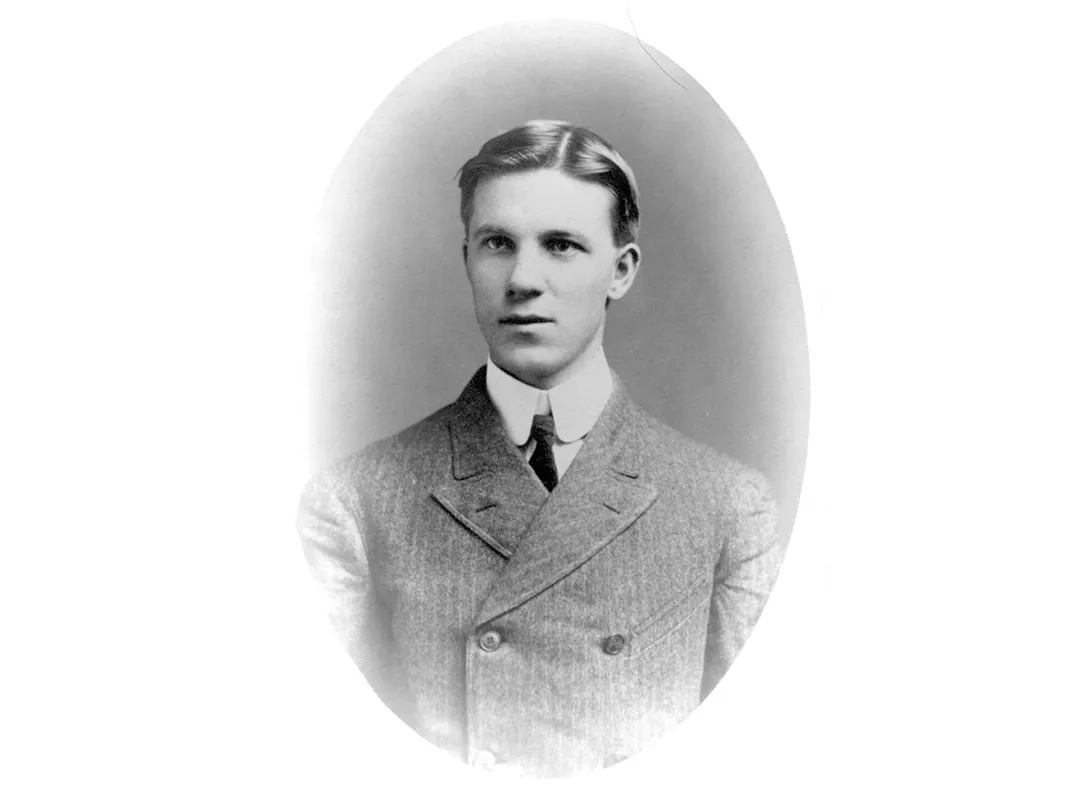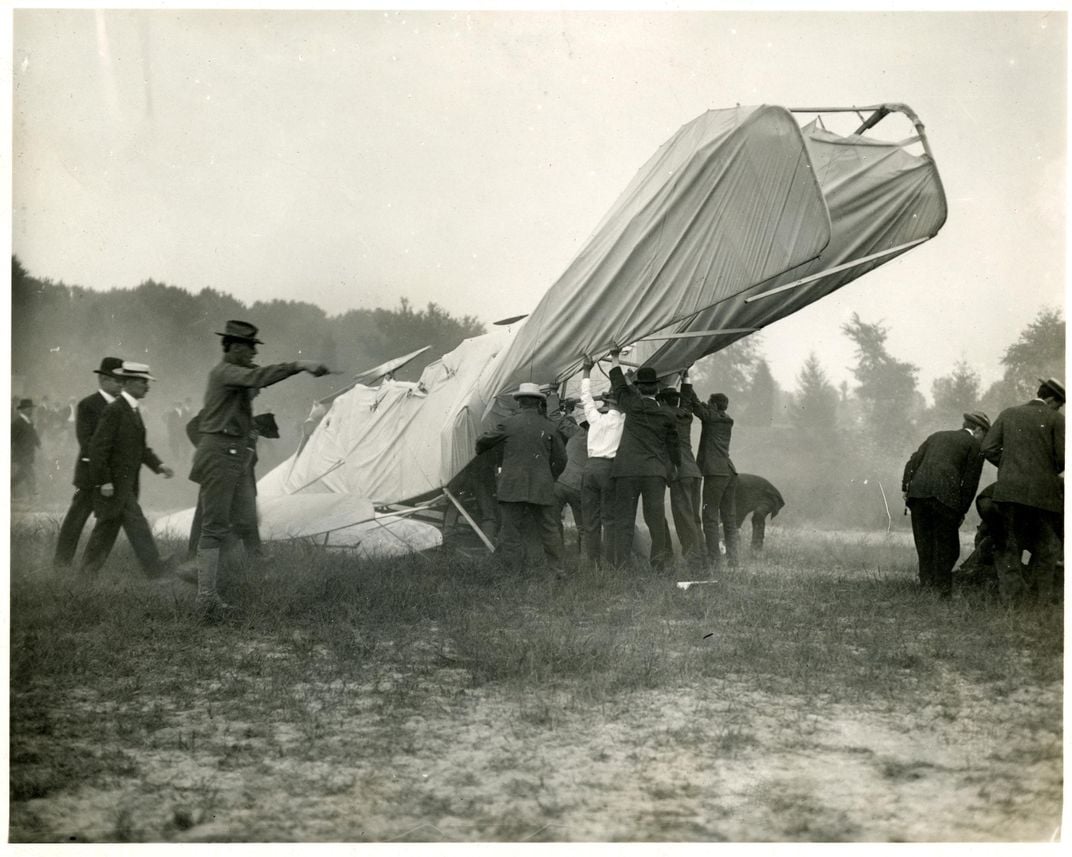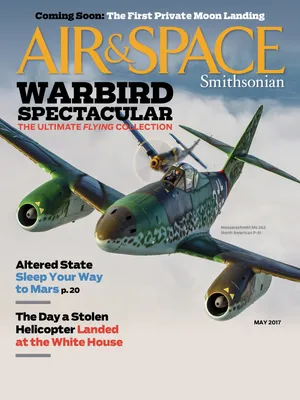The First Airplane Passenger
The Wright brothers’ indispensable helper got a ride as a reward.
/https://tf-cmsv2-smithsonianmag-media.s3.amazonaws.com/filer/da/6b/da6b4deb-433a-4aa0-acb1-78567513e8ab/17e_am2017_newhiresfore_lcrop.jpg)
Just before 8 a.m. on May 14, 1908, Wilbur Wright made an easy landing on the beach at Kitty Hawk. He had covered about 2,000 feet in just over 28 seconds, figures that by this point in his career were routine, even underwhelming. But it was still a flight for the record books: For the first time, one of the Wrights had taken a second person aboard one of their wood-and-fabric machines. That man was my great-great-great-uncle, Charles Furnas.
Charley, as friends and family knew him, traveled a curious path to his role with the Wrights. He was born in 1880 in West Milton, Ohio, on the outskirts of the Wrights’ hometown, Dayton. Exchange apps for engines and you can imagine southwest Ohio as the Silicon Valley of late 19th century America. In that era, Ohio inventors were stoking a revolution in transportation. Dayton ranked fifth in the nation in patents issued per capita in 1870, and first by 1890. The atmosphere must have been charged with excitement for technology, with everyone trying to make something important, or make a buck, or—ideally—both.
In 1902, Charley joined the Navy, hoping to gain mechanical experience. After serving four years as a mechanic’s mate, he got an honorable discharge and returned to Dayton with ambitions to put his skills to work. By 1908, Charley was working for a Dayton machinist whose shop was within walking distance of the Wright bicycle shop on West Third Street.
According to Wilbur’s diaries, Charley had observed some of the Wrights’ flying tests at Huffman Prairie in November 1904, likely while he was on Thanksgiving leave from the Navy. The Wrights were famous men by 1908. Charley was one of their most enthusiastic fans, and he could barely contain his excitement at working just down the street from them. He made frequent visits to their shop, pestering the brothers to teach him about flying while offering labor in exchange.
Eventually, the Wrights allowed Charley to assist their full-time mechanic, Charles Taylor, on various odd jobs. On April 11, 1908, Charley received his first paycheck from the Wright organization.
He’d begun working for the brothers just as they had finally succeeded in selling an airplane to the U.S. Army for $30,000 (more than $700,000, adjusted for inflation). Soon after that, they were contacted by a group of French businessmen who wanted to manufacture their own Wright-model aircraft in Europe.

Both deals were contingent upon the airplane’s capability to carry a passenger. Most of Charley’s work was likely modifying their 1905 machine, the Flyer III, which would become the first capable of carrying a passenger. When the new machine was complete, Wilbur left for Kitty Hawk in early April, with Orville slated to join him at the end of the month.
Upon his return to Kitty Hawk for the first time in five years, Wilbur found that weather and looters had left the Wrights’ campsite and hangar in shambles. He assembled a local crew to help redevelop the camp, but was hit with another setback: He fell ill. As he reached his wit’s end, Wilbur received a big surprise, recorded in his diary on April 15, 1908:
“Toward noon we saw a man over at camp. I thought it might be one of the carpenters and went over to see what he wanted. Was very much surprised to find it was Charley Furnas from Dayton.”
Uninvited and unannounced, Charley had traveled from Dayton—more than 650 miles—just to be there for the flight. Wilbur didn’t have the funds to pay Charley, but Charley couldn’t have arrived at a time when Wilbur needed more help. Undeterred by the prospect of working for free, Charley was put in charge of the carpenters and laborers rebuilding the Wrights’ camp.
By the end of April, Orville arrived in Kitty Hawk to a scene far less bleak than the one Wilbur had encountered, thanks in large part to Charley’s efforts. Soon, Orville and Wilbur were making solo hops in the Flyer III with a sandbag in the second spot to approximate the extra weight. They had famously vowed never to fly together, in part so that in case of an accident, one of the brothers could continue their experiments and in part to comply with a request from their father, who didn’t want to face the tragedy of two of his sons dying in the same crash.
By mid-May, the Wrights had developed enough confidence in the Flyer III to take up a passenger. They bestowed that honor upon Charley. On May 14, Wilbur took Charley for a flight of about 800 feet. That same day, Orville flew Charley a distance of two miles, making my great-great-great-uncle not only the first airplane passenger, but one of the very few who could claim to have flown with both of the Wright brothers.

Days later, Wilbur headed to France to fly demonstrations for the Wrights’ potential clients, and Orville left for Dayton to prepare for the presentations to the Army, with Charley in tow. In the months between Kitty Hawk and the Signal Corps demonstrations, Charley at last became a full-time employee of the Wrights.
On September 17, 1908, Orville took a young Army lieutenant named Thomas Selfridge as a passenger during a demonstration flight for the Signal Corps at Fort Myer, Virginia. During their fourth lap, an engine malfunctioned, and the flight ended in a dramatic crash landing.
Orville sustained serious injuries, including a broken leg. Selfridge was less fortunate, dying later that evening due to complications from a fractured skull. He was history’s first powered-aviation fatality. Charley was one of the first people to rush out to sort through the damage. He would have seen Selfridge lying prostrate in the wreckage of the Model A, and it probably wouldn’t have been lost on him that only four months earlier, he had occupied the same seat aboard the Flyer III.
After the accident, Charley returned to Dayton and quickly cut professional ties with the Wrights. There’s no record of why he quit; perhaps it was the strain of witnessing Selfridge’s death. He returned to West Milton and stayed there for the rest of his life, opening his own garage, getting married, and buying a movie theater that ran early talkies. Although history would seldom recall his name, when Charley passed away, on October 16, 1941, his funeral drew the attendance of at least one famous friend: Orville Wright.
Charley became a footnote in the story of flight, remembered by only the most dedicated early aviation enthusiasts, Wright scholars, and family members. As part of the latter group, I’ve often wondered if his legacy is something that ought to be known to a wider audience. I recently asked my great-uncle Dick about Charley, who was his great uncle. Dick joked that because of the sandbags the Wrights had used to approximate a passenger before Charley’s flight, that Charley was simply offered the honor of being a historic “bag of meat.” There’s a grain of truth in every joke, but I believe there is value in Charley’s story. It reminds us what’s required of pioneers and innovators: a desire to be part of something new that drives them to obstinacy and single-mindedness.
My great-great-great-uncle Charley’s dedication to machines and flying made him give four years to the Navy, and hundreds of hours of unpaid work and hundreds of miles of unpaid travel to the Wrights. Given his obsession with a pursuit that had eluded humankind for centuries, perhaps becoming a literal passenger to history is a fitting legacy.
